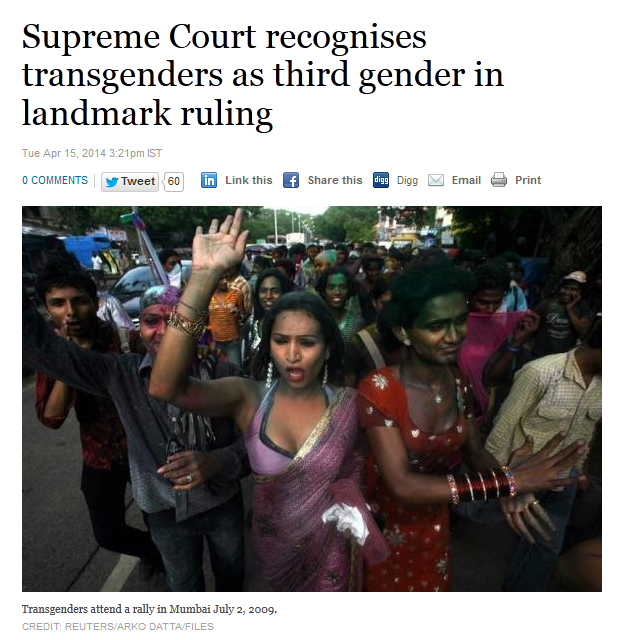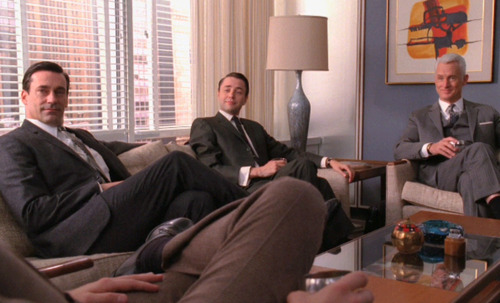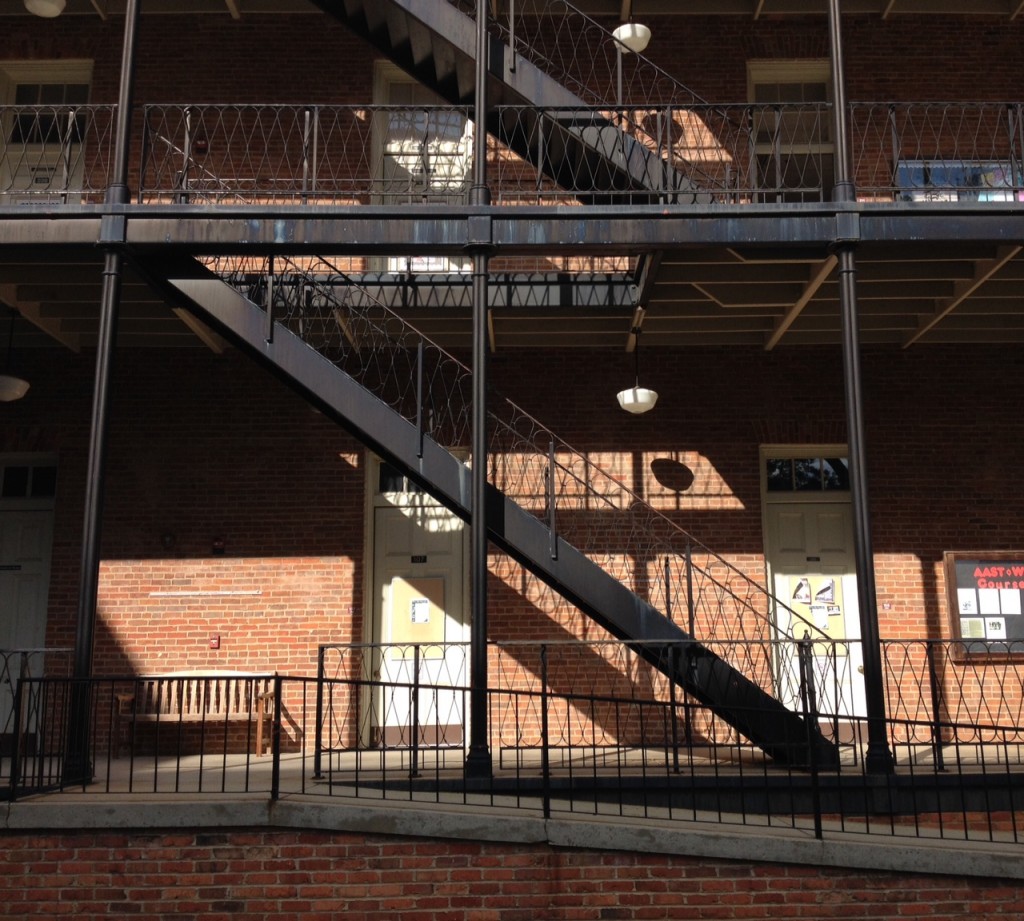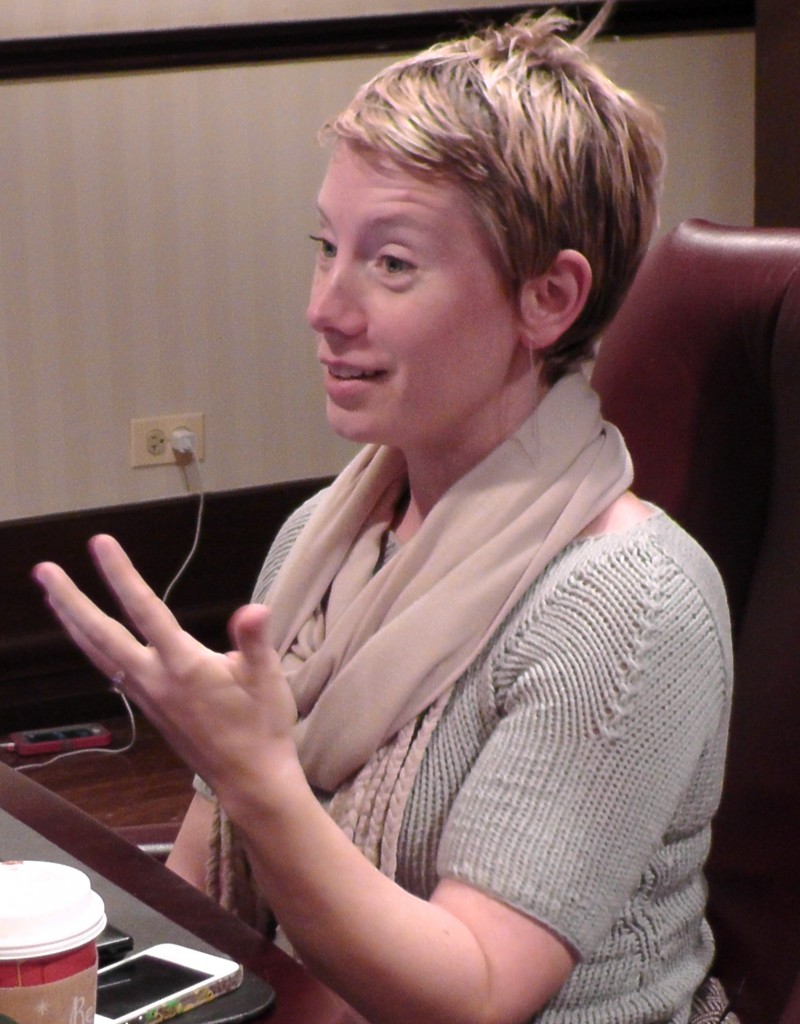 I like their chicken salad. A lot. But every time I go into either of the two local stores it not only seems like I’m the only guy in there but, also, that everyone else seated eating or in line ordering is either a member of a sorority or wishes they were — it’s like there’s a code and I didn’t get the memo about the breezy little sundress. Continue reading “Your Turn: Delicious Ideologies”
I like their chicken salad. A lot. But every time I go into either of the two local stores it not only seems like I’m the only guy in there but, also, that everyone else seated eating or in line ordering is either a member of a sorority or wishes they were — it’s like there’s a code and I didn’t get the memo about the breezy little sundress. Continue reading “Your Turn: Delicious Ideologies”
The Wild Profusion of Things
 A recent news story from India, and the way many here seem to be celebrating it as a victory over stifling binaries, prompted me to comment on Facebook:
A recent news story from India, and the way many here seem to be celebrating it as a victory over stifling binaries, prompted me to comment on Facebook:
Expanding A Woman’s Touch
 Russell McCutcheon’s blogpost yesterday analyzed the viewer’s role in reading this image (above) juxtaposing the current leaders of Chile, Argentina and Brazil to
Russell McCutcheon’s blogpost yesterday analyzed the viewer’s role in reading this image (above) juxtaposing the current leaders of Chile, Argentina and Brazil to the past dictators of those three nations three of the first members of the Chilean Junta: Leigh (Air Force), Pinochet (Army) and Merino (Navy), emphasizing the conservative notion of gender that appears to inform the reading of the image in ways that people often identify as progressive. That reading of the image that McCutcheon analyzed also overlooks the strategic production of such an image. Continue reading “Expanding A Woman’s Touch”
A Woman’s Touch

This pic was making the rounds of social media the other day — have you seen it? It depicts the presidents of Brazil, Chile, Argentina today, and, at bottom, during the 1970s.
It speaks for itself. Right? Continue reading “A Woman’s Touch”
Gender Switching
 Did you ever see the classic comedy “Some Like it Hot?” (1959), in which Jack Lemmon and Tony Curtis hide from the mob (and both fall in love with Marilyn Monroe), by impersonating members of an all-female band that’s on the road?
Did you ever see the classic comedy “Some Like it Hot?” (1959), in which Jack Lemmon and Tony Curtis hide from the mob (and both fall in love with Marilyn Monroe), by impersonating members of an all-female band that’s on the road?
Question: when does code switching become cross-dressing?
You’ll learn more at Lehigh University when
the Edge comes to town next week.
Sally is a Girl
 Back in 1961, in the first season of the once popular “Dick Van Dyke Show,” an episode aired (#14, to be exact) entitled “Sally is a Girl,” in which Rob’s wife, Laura, scolds her husband because he and Buddy don’t treat Sally — with whom they work as comedy writers for a TV variety show — properly. And by “proper” she means they fail to treat her like a lady.
Back in 1961, in the first season of the once popular “Dick Van Dyke Show,” an episode aired (#14, to be exact) entitled “Sally is a Girl,” in which Rob’s wife, Laura, scolds her husband because he and Buddy don’t treat Sally — with whom they work as comedy writers for a TV variety show — properly. And by “proper” she means they fail to treat her like a lady.
“Just remember,” Laura tells Rob — after they’d hosted a small dinner party where, for the umpteenth time, they unsuccessfully tried to set Sally up with a date (the recurring theme of Sally’s single life), during which Buddy and Rob kept bragging that she could tell jokes as good as a man — “that Sally is a girl!” Continue reading “Sally is a Girl”
Who Are You? I’m a Leg Crosser
 “Who Are You?” asks members of Culture on the Edge to reflect
“Who Are You?” asks members of Culture on the Edge to reflect
on one of their own many identities (whether national, gendered,
racial, familial, etc.), theorizing at the same time the self-
identification that they each chose to discuss.
Sometimes when students are in my office and I’m trying to draw their attention to the sometimes subtle ways in which we act ourselves into certain sorts of identities I’ll ask them to take a quick look at how we’re both sitting. There’s a good chance that I’m behind my desk, reclining a bit in my office chair, and seated like those guys above, and there’s an equally good chance that the student I’m talking to is not seated like this. And so drawing attention to how we’re both sitting — something that we’ve each done quite unselfconsciously, I’m sure — gives us a chance to think through identity as an empirically observable thing, as something we persuade ourselves and others that we have by repeatedly acting ourselves into it. Continue reading “Who Are You? I’m a Leg Crosser”
Resistance is Futile
 Our Department is located in a late 19th century building that was originally a residence, built in New Orleans style, with balconies, wrought iron railings, and staircases on the exterior of the building. The stairs seem a little steep, so you get a work out going up.
Our Department is located in a late 19th century building that was originally a residence, built in New Orleans style, with balconies, wrought iron railings, and staircases on the exterior of the building. The stairs seem a little steep, so you get a work out going up.
One thing I’ve noticed here, over the past decade or so, is how this particular architecture makes certain gender ideologies evident. Continue reading “Resistance is Futile”
On the Spot with Leslie Dorrough Smith
“On the Spot” backs members of Culture on the Edge into a corner to talk about their backgrounds, their ongoing work, and what might be gained by an alternative understanding of how identity works.
 Q: Leslie, you have a book out soon that is on the way a certain rhetoric of chaos vs. order is used by some groups in the U.S. to organize themselves, by distinguishing their members from others, their preferences from others, and their values from others. Is that a fair (if general) description of your project? Could you tell us more?
Q: Leslie, you have a book out soon that is on the way a certain rhetoric of chaos vs. order is used by some groups in the U.S. to organize themselves, by distinguishing their members from others, their preferences from others, and their values from others. Is that a fair (if general) description of your project? Could you tell us more?
A: Yes – this is a fairly unorthodox approach to a very mainstream subject. The book, which is about the rhetoric of one Christian Right group, is entitled Righteous Rhetoric: Sex, Speech, and the Politics of Concerned Women for America (Oxford, 2014). Continue reading “On the Spot with Leslie Dorrough Smith”
On the Spot with Merinda Simmons
“On the Spot” backs members of Culture on the Edge into a corner to talk about their backgrounds, their ongoing work, and what might be gained by an alternative understanding of how identity works.
 Q: Tell us a little bit about your doctoral studies, since they were not carried out in the academic study of religion, yet that’s the field in which you now work as a professor. How was your training in the Department of English relevant to the work you now do and the classes you now teach?
Q: Tell us a little bit about your doctoral studies, since they were not carried out in the academic study of religion, yet that’s the field in which you now work as a professor. How was your training in the Department of English relevant to the work you now do and the classes you now teach?
A: I never expected to end up teaching in a Religious Studies department. But really, my studies in English overlap with the work I now do in a variety of ways. The strands of literary criticism that I found most interesting were ones that questioned the roles of authorship, text, and readership. The more literary theory I read, the more difficult it became for me to see “author” and “text”, for example, as two discrete categories. I remember the first time I read “The Death of the Author” by Roland Barthes—I was completely floored. And that was just the beginning! Continue reading “On the Spot with Merinda Simmons”

